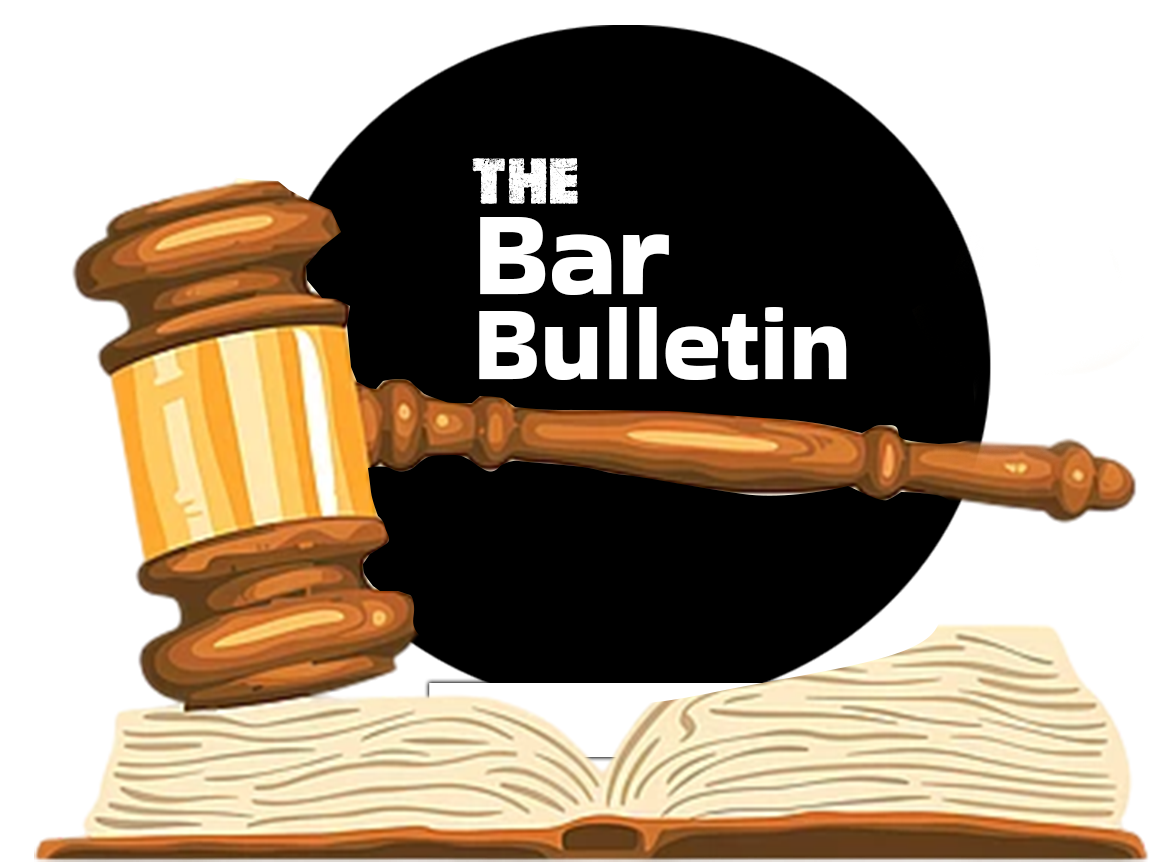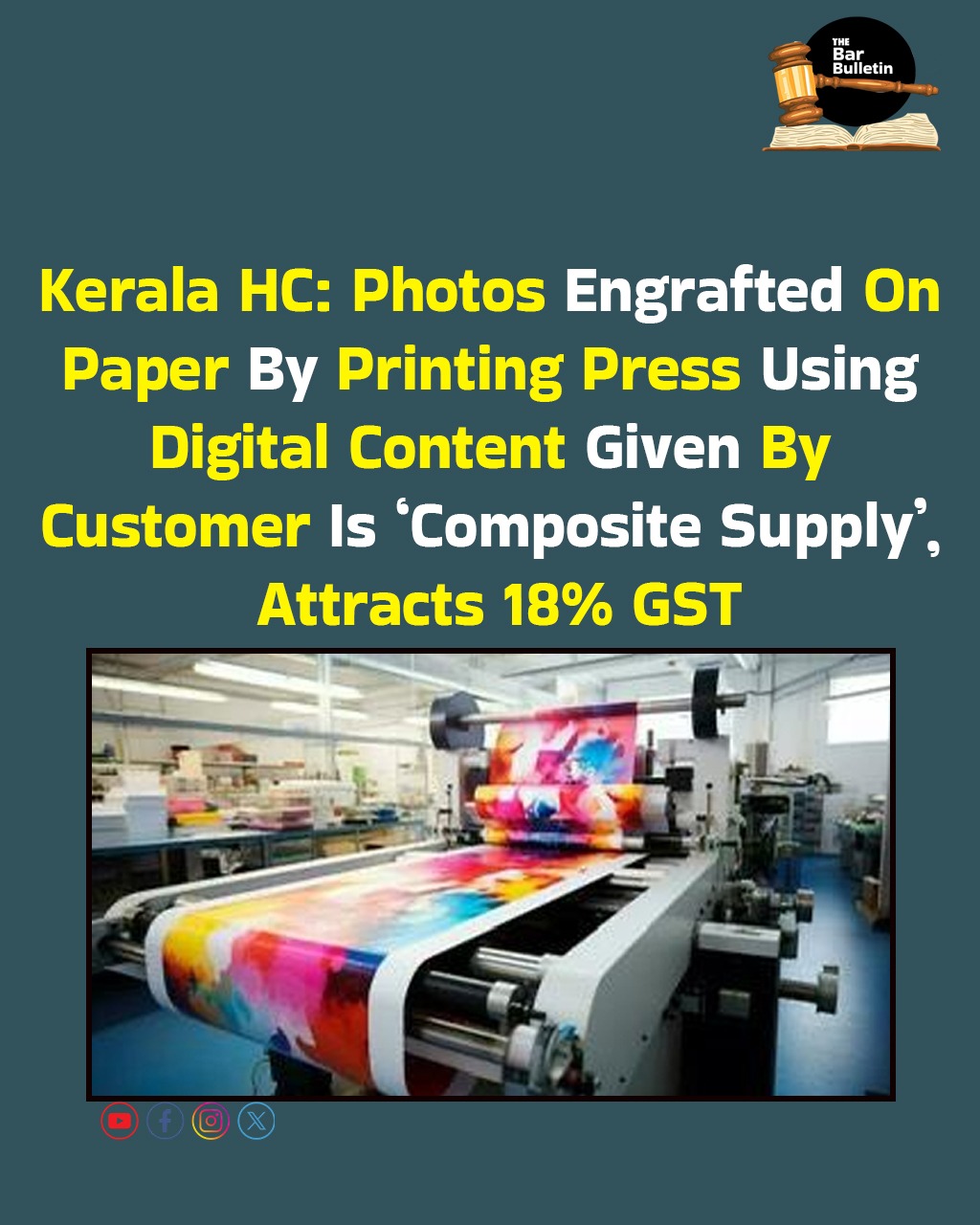The Kerala High Court (Ernakulam Bench) clarified that the final output containing photographs printed on the paper would not make the same an act of transfer of goods. The Court added that the activity of printing amounts to the predominant element of the composite supply and the supply of paper by the petitioners, which is only a tool to affect such supply of service, has to be treated as an ancillary activity. The Court explained that the tax liability has to be determined based on the activity of printing, whereas the supply of goods in the form of paper used for printing is not at all relevant.
Referring to the statutory scheme of the CGST Act and the nature of the activity, i.e., the printing of photographs and other similar things based on the content furnished by the customers, the Court concluded that the activities of the petitioners would amount to composite supply, where the predominant element would be the supply of services. Accordingly, the activity undoubtedly falls within SCN 998386, which is meant for printing photographic and videographic processing services.
As far as relevant entries are concerned, the Court pointed out that HSN Code 4911 mainly refers to the supply of goods in the form of printed materials, whereas the SCN 998386 refers to the photographic and videographic processing services, where the printing of images from film or digital media is specifically included therein.
The Court also explained that the word “digital media” itself indicates a process where no negatives are necessary, and therefore it certainly leads to the conclusion that SCN 998386 takes in, the service of digital printing, whether it is through offset printing machinery or other machines.
A Single Judge Bench of Justice Ziyad Rahman A.A. observed that when a printed material is supplied to the customers by the petitioners after completing the printing process, no transfer of title takes place. Admittedly, there is a supply of goods in the form of paper used for printing; however, as far as the paper used for printing is concerned, it is only a material or means used for printing the actual property, and therefore, it is only a tool to supply the service of printing of those contents supplied by the customers.
The Bench admitted that one of the main activities of the petitioners is to print the photographs, which are supplied by their respective customers in a digital form, using paper and ink and printing machines owned by the petitioners. However, going by the nature of the activity, the Bench found that the same includes both the elements of the supply of goods as well as the supply of services, and hence it is a composite supply, as defined under section 2(30) of the CGST Act.
The Bench observed that the main object of printing is to convert the figures, letters, photographs, etc, into a digital form, into a physical format by printing it on the paper supplied by the petitioners. Since those contents in a digital format are entrusted with the petitioners for the purpose of printing the same into paper, to be returned to the customers after completing the printing activity, the title over such photographs remains with the customers only, and therefore, no transfer of title in goods occurs from the customers to the petitioners.
Briefly, in this case, the petitioners’ partnership firm runs an offset printing press, for which the customer supplied the content as digital files or digital video through CD/DVD/SVD, and the petitioners used to print and supply the same to the customers. The printing activity involves the supply of goods as well as the supply of services. While the content to be printed is supplied by the customers, the materials required for printing, such as ink & paper, are provided by the petitioners. According to the petitioners, the said activity, being a composite supply, is taxable at the rate that is applicable to the principal supply involved in the said transaction. The petitioners also claimed that the same falls within HSN Code 4911, attracting 12% GST.
However, based on the inspection conducted by the tax authorities in the respective premises of the petitioners, it was alleged that the petitioners had misclassified the services, and their activity would come within the Code SAC 998386, which deals with photographic and videographic processing services and attracts tax at the rate of 18%.
Appearances:
Advocates R. Sreejith, K. Krishna, Achyuth Menon, Meera V. Menon, and Padmanathan K.V., for the Petitioner/ Taxpayer
Advocate Reshmitha R Chandran, for the Respondent/ Revenue

